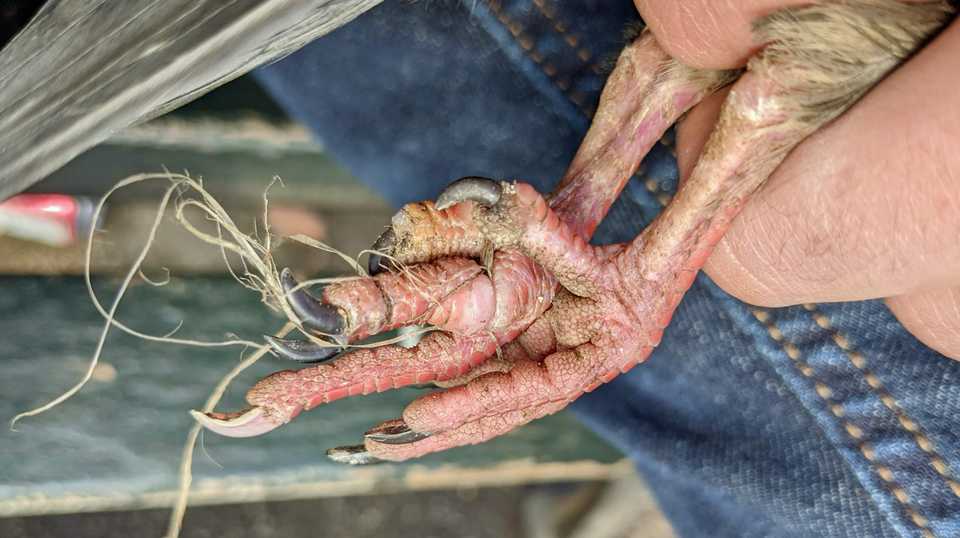Destringing
Assessing the Situation
The first step in helping a pigeon patient is to assess their situation as best you can. You will need to decide whether you can help them in the field or whether you will need to take them away for more serious medical attention.
This is not always an easy decision to make. Remember that by taking them you potentially separate them from their flock, their partner, and baby squeakers who will not survive with only one parent. Pigeons are audacious and will attempt to raise children any time, regardless of season, if they think they have enough resources and the skills to pull it off.
Your decision will also depend a lot on your own access to resources. It's best to know ahead of time where you would take a pigeon who needs serious help.
Don't panic. You will make the best decision you can when the time comes. Help the birds.
Destringing Tips + Techniques
- Try to keep the flock nearby and occupied. Scatter some seed before beginning destringing. Bread has very little nutritional value and should not be your primary offering, however: a chunk of it can keep the flock occupied for a long time (ripping off pieces and flinging it around).
- Moisten the string and try to get the foot clean (use veterinary wound wash in a spray bottle) before doing anything that might expose wounds.
- A warm foot bath can do wonders – especially with bath salts. It will loosen chunks of dead flesh and gunk that builds up in crevices created by string tightening around the foot.
- Always try to unwind before cutting. It makes it easier to be sure that you've got all the small threads and strands of hair.
- Be very careful if a pigeon's skin has grown completely over a piece of string or hair such that it now travels through their foot. Pulling the material out may cause serious bleeding – not something easy to handle in the field.
- If there is any bleeding, stop and address it. Clean the area and sprinkle antiseptic powder onto the wound. Use cotton gauze to apply moderate pressure until bleeding stops.
- Reassess as you go and feel for changes in the pigeon's breathing or heart rate.
- Make sure they don't get their beak / toes caught in something you wrapped around them.
- Save the material that you remove. If you let it drift around on the ground it will simply become a danger again. After leaving the field, cut up string and material before disposing of it in some way that you think will be safe (or as safe as possible given our collective waste management systems).
- When you think you are finished, pause and do one more thorough examination. It is alarmingly easy to miss thin strands of hair.
Open Questions
- What are the circumstances when you would separate a pigeon from their flock?
- How to deal with necrotic flesh?
- If a digit seems to be completely detached (bone broken or disconnected), and is getting little to no blood-flow, would you:
- a) leave the toe, let them go, and hope for the best
- b) separate the pigeon from the flock, take them to a medical facility, and have the toe amputated
- Are there situations where destringing without severing a non working digit could be dangerous?
